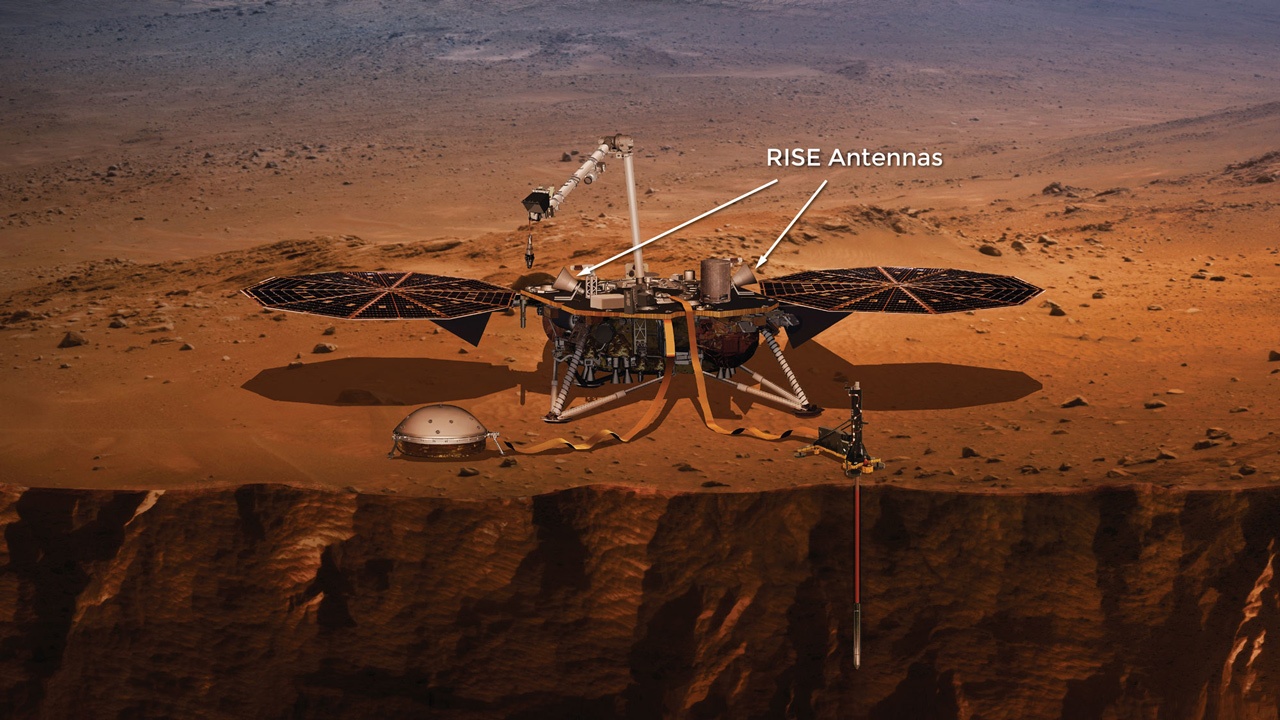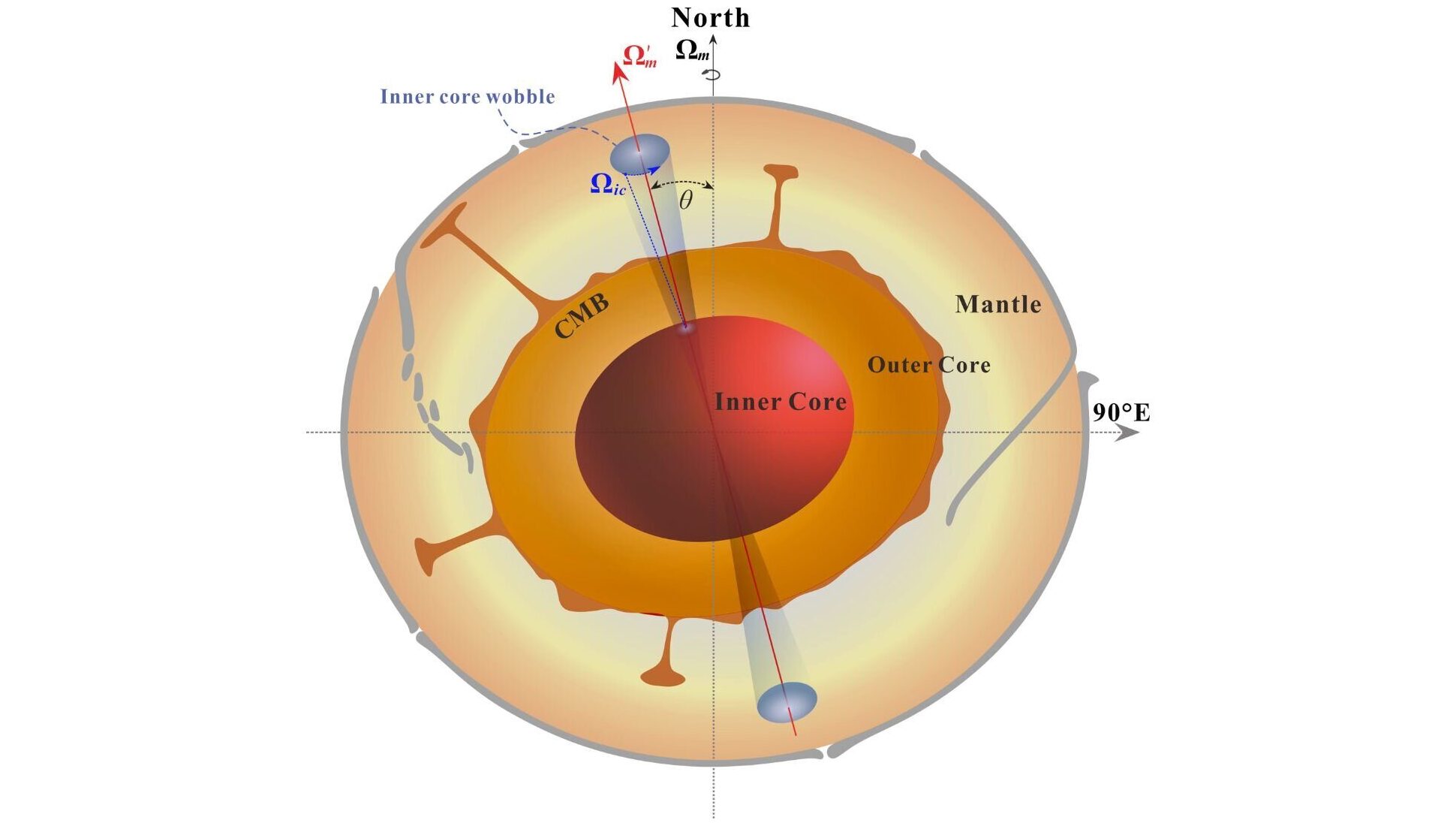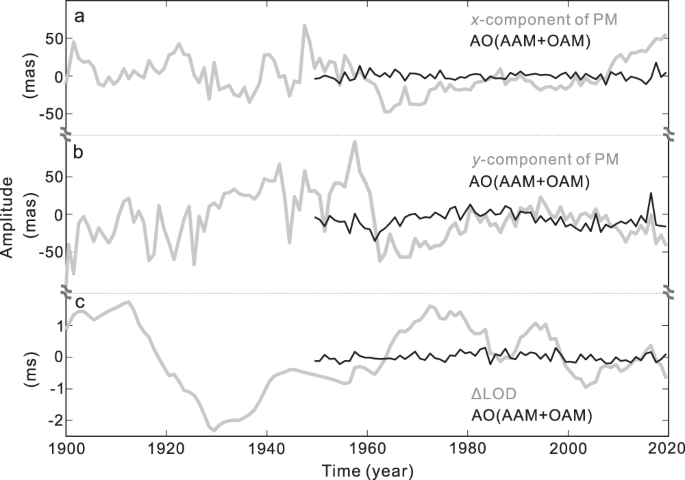SasaM
Jedi Council Member
Thanks for this UT article, it also provides a link to free-shared online edition of full Nature article mentioned in previous post in the thread.FWIW, Mars is said to be spinning faster as well!

Mars is Spinning Faster and Faster
Before it retired, NASA's Mars Insight Lander sent home detailed data about the rotation of Mars. From these data, planetary scientists have discovered that the planet's rotation rate is accelerating by about four milliarcseconds per year, shortening its day by a fraction of a millisecond...www.universetoday.com
In the original Nature article we see a fair deal of "could" statements trying to explain the estimated (modeled) speeding up of 4 mas/yr2, which translates to 0.76 microsecond/yr shorter Martian days (a really very tiny fraction of a millisecond).
Nature article said:The Doppler measurements are analysed by using two different orbitography software packages, MONTE7 and GINS8,9 (Supplementary Information section1), using, as apriori,recently publishedvaluesfor the rotation and polar motion parameters10 and for therigid nutation parameters11 (Methods). Priors for the transfer-function parameters are taken in a large range of values (Supplementary Information section2). To decorrelate the precession rate and the orientation of the spin axis at the epochof reference, we also consider data from Viking1 Lander, in addition to 30 months of more-accurate RISE tracking data (Methods).
Martian rotation and orientation estimates
The estimated rotation and orientation parameters converge after 600 days of operations (Fig.1), and even sooner for the precession rate, on the basis of combined Viking and RISE data (Supplementary Information section4).
Separate analyses of Viking and RISE data led to incompatible esti-mates of the rotation parameters. We therefore estimated separate sets of seasonal spin series for each mission, along with a quadratic term (φ¨) modelling a spin acceleration. Our estimate of φ¨ = 4.11 × 10−12 ± 9.1 × 10−13 degrees per day2 (Fig.1a), the first secular (extremely slow) trend detected in the Martian rotation rate, translates into a decrease in Martian day length of 7.6 × 10−4 ms per year, which corresponds to a rotational acceleration of 4.0 ± 0.9 mas yr−2. This is three orders of magnitude larger than that resulting from Phobos tides and than the expected deceleration by the Sun. This rotational acceleration could be the expression of a long-term trend in the internal dynamics of Mars, or in its atmosphere and ice caps. A secular variation of the second- degree gravity zonal coefficient ̇J2 = −4.4 × 10−12 over one Martian year (an order of magnitude smaller than for Earth) would be consistent with the observed acceleration and could be related to postglacial rebound. It could also result from an extremely slow accumulation of ice at the polar caps (<4 cm per Earth year above the 80º N latitude of the permanent cap), leading to a decrease in atmospheric pressure of less than 0.1 Pa per Martian year, which is below the 1.5 Pa absolute error of the InSight APSS pressure sensor12.
We detected the small motion (≤40 cm) of a lander in inertial space, owing to the effect on nutations of the Martian liquid core, and obtained estimates for the nutation parameters F = 0.0615 ± 0.007 and τFCN = 2π/ωFCN = −243 ± 3.3 days (Fig.1c,d). Our estimated precession rate, ψ =−7,598.1±2.2̇ mas yr−1 (Fig.1b), corresponds to a normalized polar moment of inertia of 0.36419 ± 0.00011 (Supplementary Infor-mation section5). New constraints on the core of Mars can be derived from these values by using a set of models of the interior structure.
Funnily or sadly, pick your choice, there's no mention of potential impact of rotating solar magnetic field on the Martian rotation, very similar to stubbornly sticking to lunar and gravitational effects and/or atmospheric drag influence on Earth's rotation, while just a simple look at the IERS data evidently shows no such things to be seen there.







